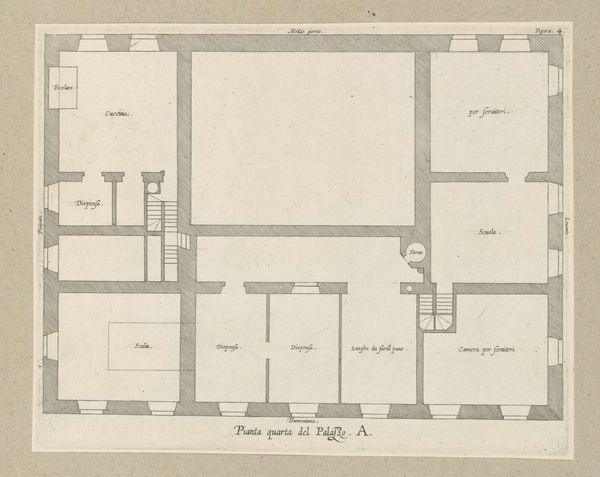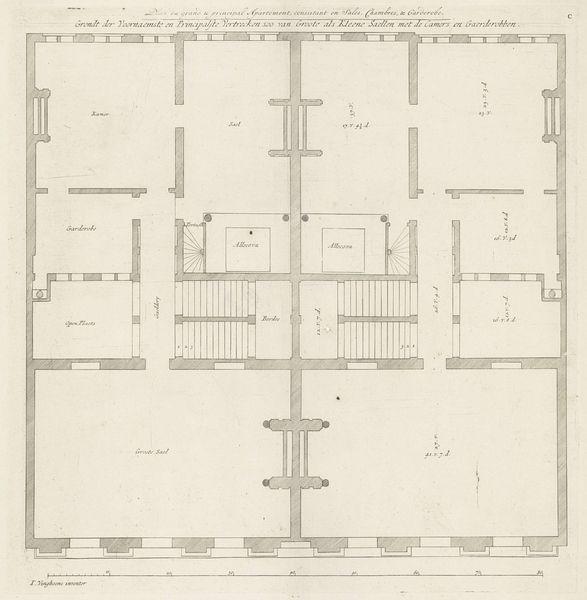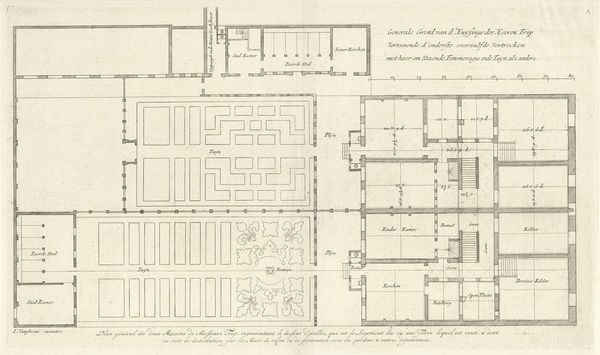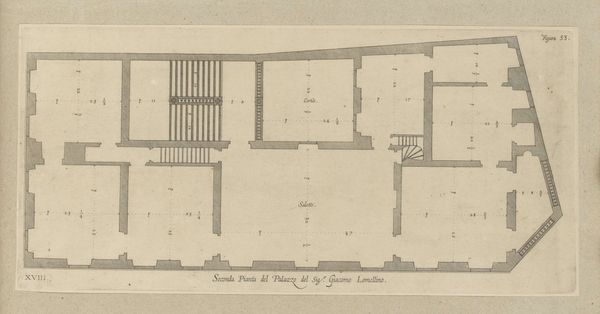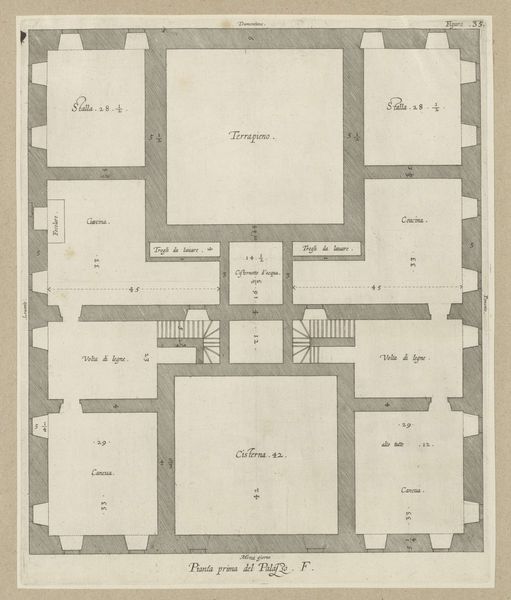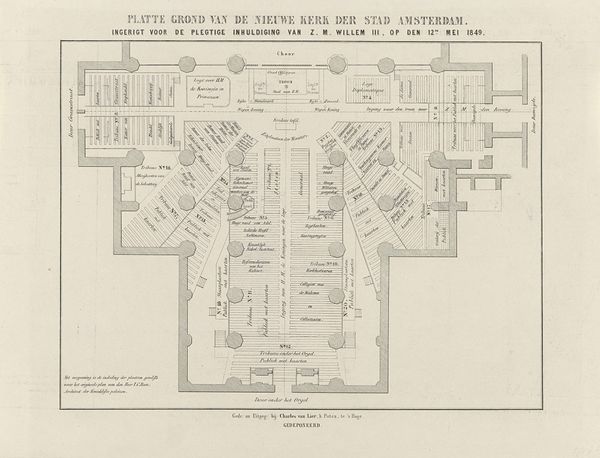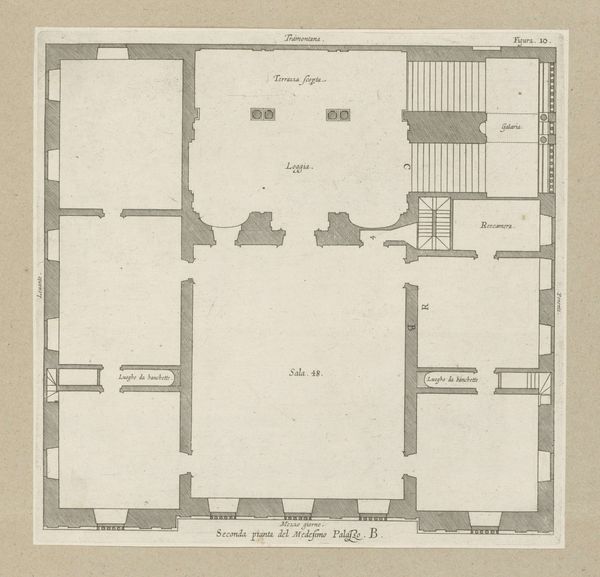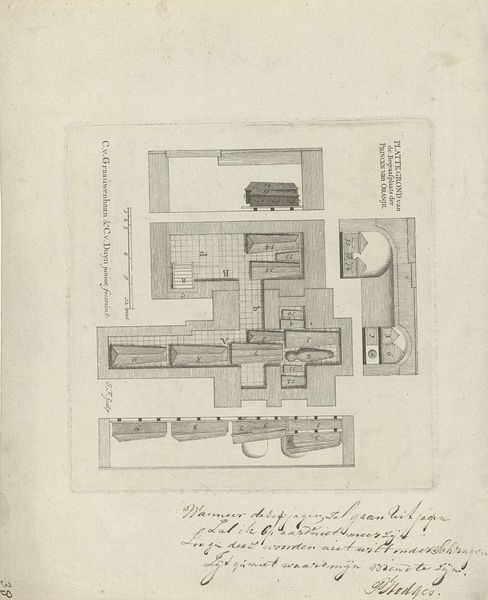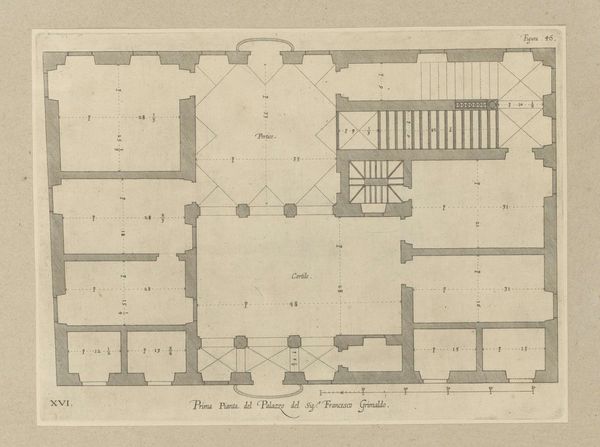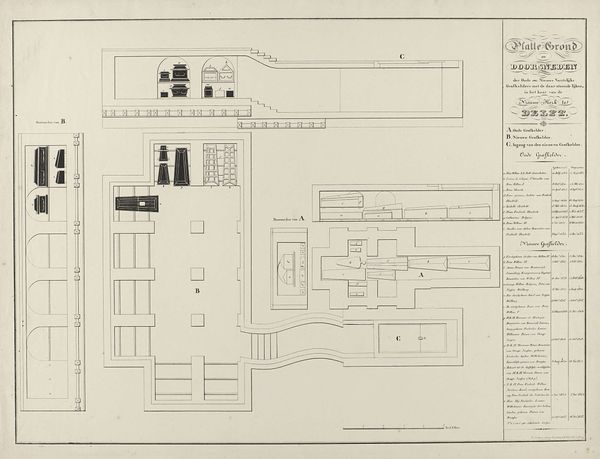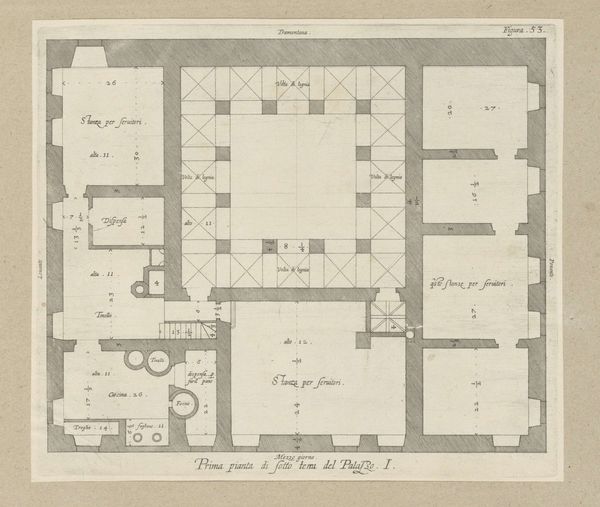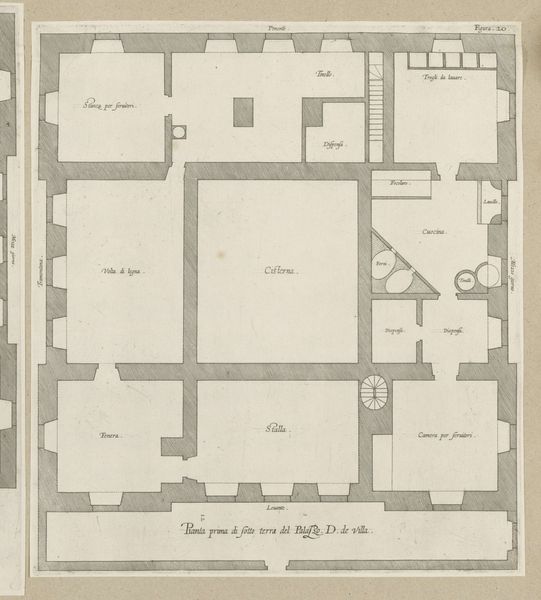
Plan der Nieuwe Kerk te Amsterdam, ter gelegenheid der Inhuldiging van Z.M. Willem III. 12 Mei 1849 1849
0:00
0:00
drawing, print, architecture
#
architectural sketch
#
drawing
# print
#
geometric
#
architectural section drawing
#
architectural drawing
#
plan drawing
#
architecture
Dimensions: height 340 mm, width 430 mm
Copyright: Rijks Museum: Open Domain
Curator: This meticulous plan depicts the Nieuwe Kerk in Amsterdam on the occasion of Willem III’s inauguration in 1849. It's rendered as a print or drawing, showcasing precise geometric detail. Editor: My first thought is sterile—like a pathologist's table made elegant. It's devoid of people, though I see the labels for different sectors—almost bureaucratic in its mapping. Curator: Indeed, it invites a consideration of power structures embedded within the church's space itself. The labels designating areas for the Diplomatic Corps, the Throne, it illustrates spatial hierarchy and the controlled participation in the event. Who had access to what, and why? This event cemented power and social order after a period of great instability in Europe. Editor: The cool precision is unsettling, like a diagram dissecting authority. Even without figurative representation, the symbols communicate potent social narratives. The empty ‘Throne’ resonates. Was its occupant secure? Were the sight lines advantageous to ensure adherence to protocol? Curator: Precisely! The plan embodies the tensions between popular sentiment and established order after 1848. Locating the building’s design within its historical moment is critical, prompting inquiries into Dutch identity, colonial policies, and the rise of industrial capitalism at the time. The very architecture could have been intended to evoke previous inaugurations; How does that connect to the colonial identity of The Netherlands? Editor: Seeing the plan as a memory device clicks for me. I immediately focus on symbols of monarchy and state. Consider its emotional and cultural charge for different viewers—royalists versus revolutionaries. The symbols contained here have such potent weight; even in two dimensions, these plans carried profound meaning and emotional weight. Curator: Right. It is essential to see this image not as a neutral record but as an active player in constructing narratives of legitimacy and belonging within Dutch society. It underscores art as inherently political, even at the level of architectural planning. Editor: I see it, through the meticulous lines and ordered structure, the blueprint conceals so many layers. Thank you.
Comments
No comments
Be the first to comment and join the conversation on the ultimate creative platform.
